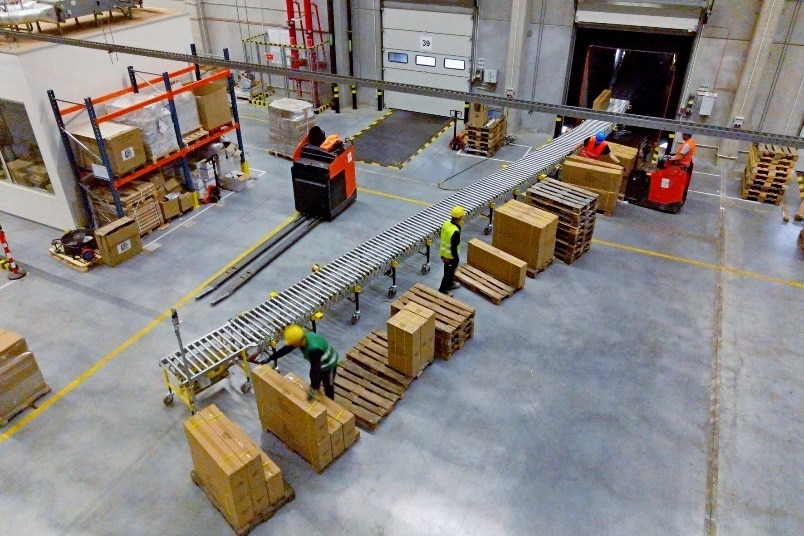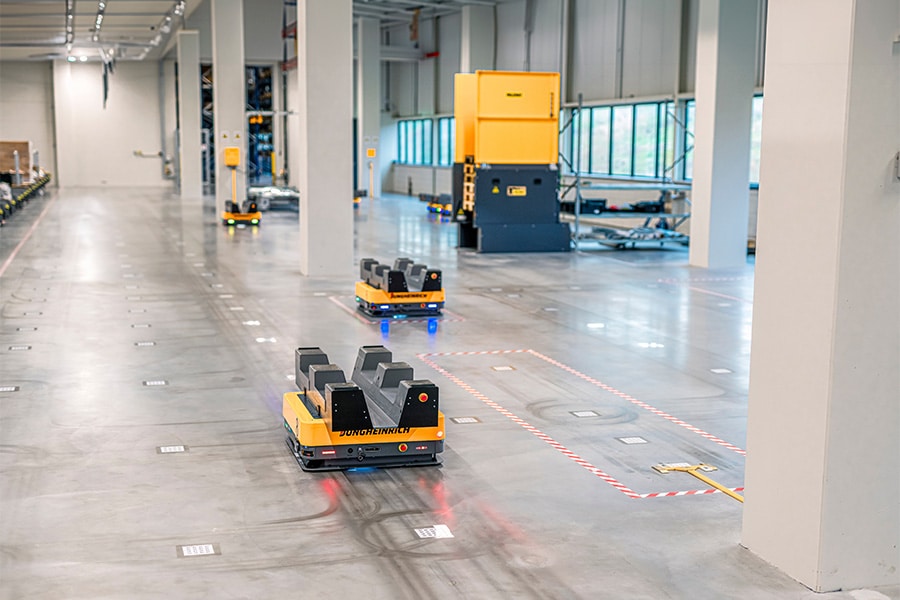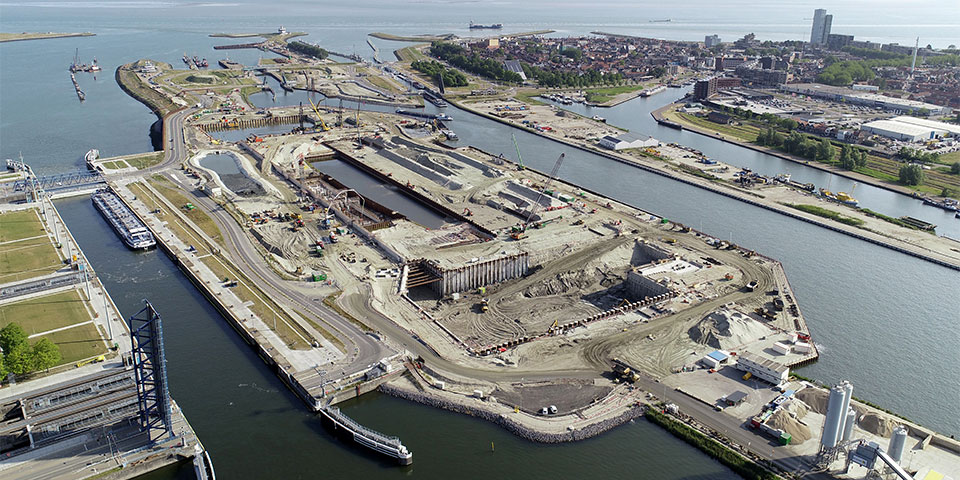
Construction excavation of outer head of New Lock in Terneuzen in full swing
The lock heads will be made in a dry construction pit, in which work will be carried out on both sides of the chute on the door casings, bridge cellar and leveling system. The outer head, which is the lock head on the Westerschelde side, is slightly ahead of the inner head on the Ghent-Terneuzen Canal side in terms of work.
The construction pit for the outer abutment was first dry excavated to -11 meters NAP, eventually to be -22 meters NAP deep. To reduce the upward pressure on the soil, the construction pit of the outer abutment was filled with about 15,000 m3 canal water. Using two cranes from a 55 x 22 meter pontoon in the tub, wet excavation was then done to -22 meters NAP. This is currently in full swing at the inner head.
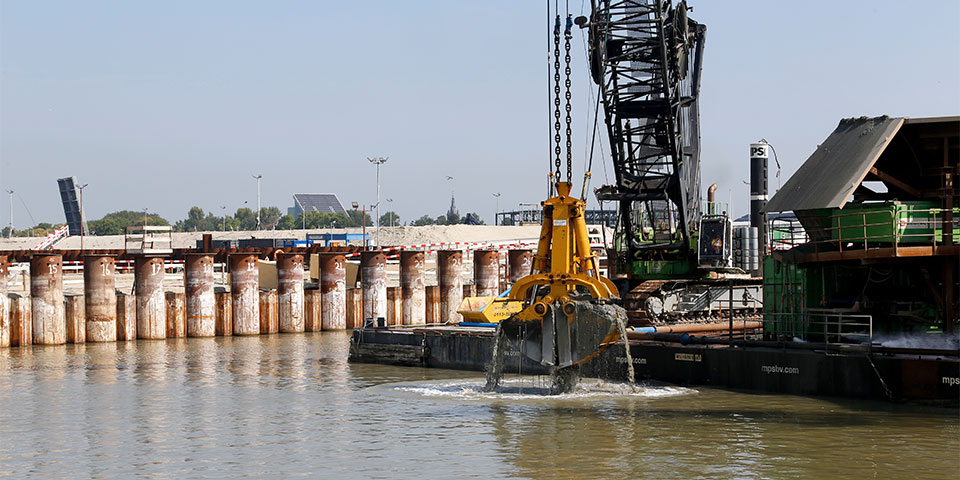
12,000 cubic meters of underwater concrete
Most of the excavated spoil during wet excavation was pumped through the existing pipeline route. The non-reusable soil went for disposal to vessels in Buitenhaven-West. Reusable soil went via a branch in the pipeline route to one of the soil depots elsewhere on the construction site. After dry and wet excavation, it was time to pour underwater concrete on the bottom of the construction pit of the outer head. For this purpose, a gravel layer was first applied, as a foundation for one meter of underwater concrete. The pouring of this took place on August 4, 5 and 6, 2020, in a fully continuous process. As many as 24 hours a day, for three days, a total of 12,000 cubic meters of underwater concrete was poured with the help of divers. The process had to be continuous to ensure the quality of the concrete floor.
Production in own concrete plants
On the Zeevaartweg construction site are the in-house concrete plants, where the underwater concrete was produced. As much as 60 tons of cement were processed there, supplied by two bulk trucks per hour from Belgium. Since the process was not to be interrupted, a ship with cement was ready as a backup, should anything go wrong with the road supply. Sand and gravel for production were delivered by ships during the day.
This way of working was in keeping with the plan to minimize disruption. Having the concrete batching plants on the company's own site avoided having to drive concrete mixers on public roads. Also, having our own production allows us to count on consistent quality of the underwater concrete.
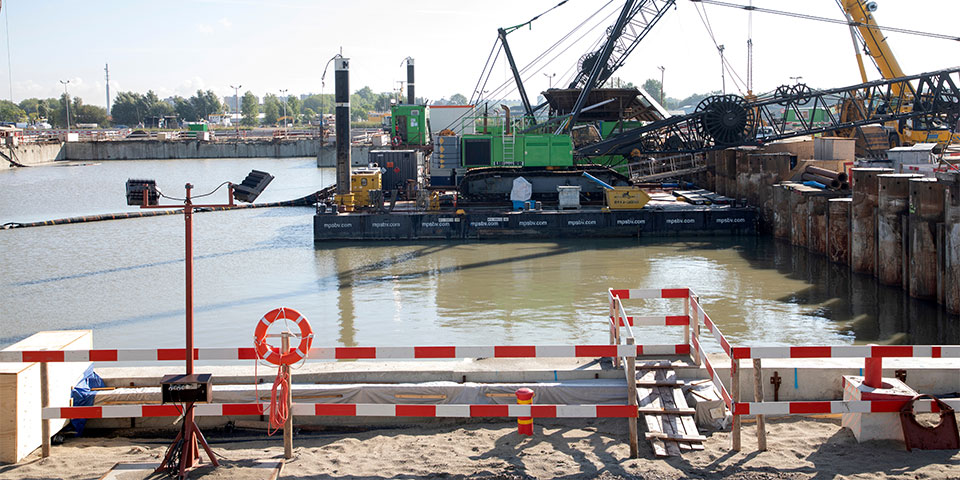
Building pit emptying
Meanwhile, the underwater concrete has cured and the building pit is being pumped out. The thick concrete floor in combination with drainage ensure that the pressure remains limited and the floor cannot burst open. The pumping is done carefully and in a controlled manner. The groundwater is extracted from under the pit. This groundwater is then returned to various ground layers in the neighborhood, so that the impact on the environment is nil. The water levels around the construction pit are monitored, as is the stability of the facades of several houses in the center of Terneuzen. For this purpose, measuring bolts have been installed in the facades. The dry construction pit is about 25 meters deep.
